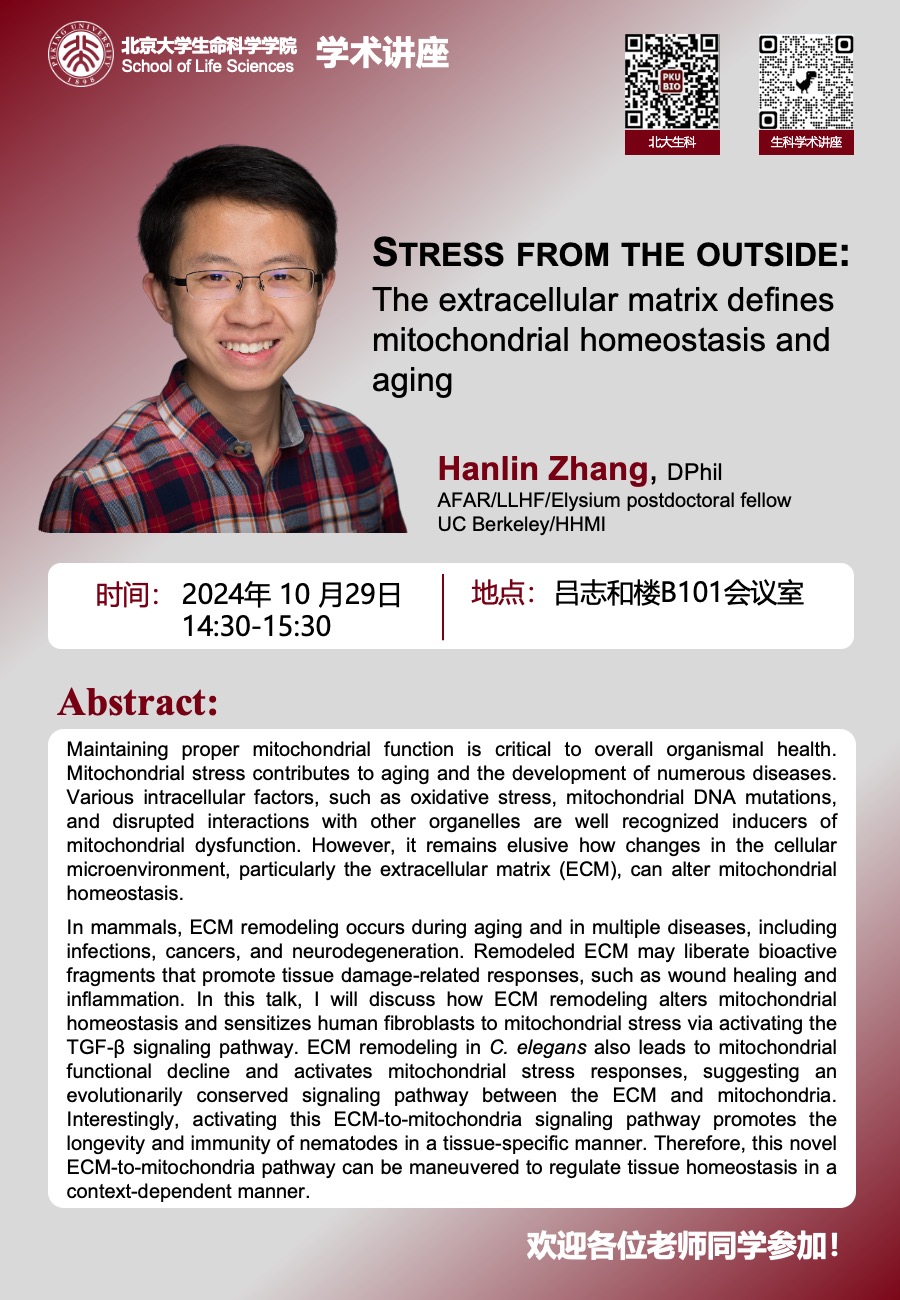[Lecture] STRESS FROM THE OUTSIDE: The extracellular matrix defines mitochondrial homeostasis and aging

Speaker: Hanlin Zhang (DPhil, AFAR/LLHF/Elysium postdoctoral fellow, UC Berkeley/HHMI)
Time: 14:30 - 15:30 p.m., Oct 29, 2024, GMT +8
Venue: Rm B101, Liu Che Woo Building, PKU
Abstract:
Maintaining proper mitochondrial function is critical to overall organismal health. Mitochondrial stress contributes to aging and the development of numerous diseases. Various intracellular factors, such as oxidative stress, mitochondrial DNA mutations, and disrupted interactions with other organelles are well recognized inducers of mitochondrial dysfunction. However, it remains elusive how changes in the cellular microenvironment, particularly the extracellular matrix (ECM), can alter mitochondrial homeostasis.
In mammals, ECM remodeling occurs during aging and in multiple diseases, including infections, cancers, and neurodegeneration. Remodeled ECM may liberate bioactive fragments that promote tissue damage-related responses, such as wound healing and inflammation.In this talk, l will discuss how ECM remodeling alters mitochondrial homeostasis and sensitizes human fibroblasts to mitochondrial stress via activating the TGF-β signaling pathway. ECM remodeling in C. elegans also leads to mitochondrial functional decline and activates mitochondrial stress responses, suggesting an evolutionarily conserved sianaling pathway between the ECM and mitochondria. Interestingly, activating this ECM-to-mitochondria signaling pathway promotes the longevity and immunity of nematodes in a tissue-specific manner. Therefore, this novel ECM-to-mitochondria pathway can be maneuvered to regulate tissue homeostasis in a context-dependent manner.
Source: School of Life Sciences, PKU
